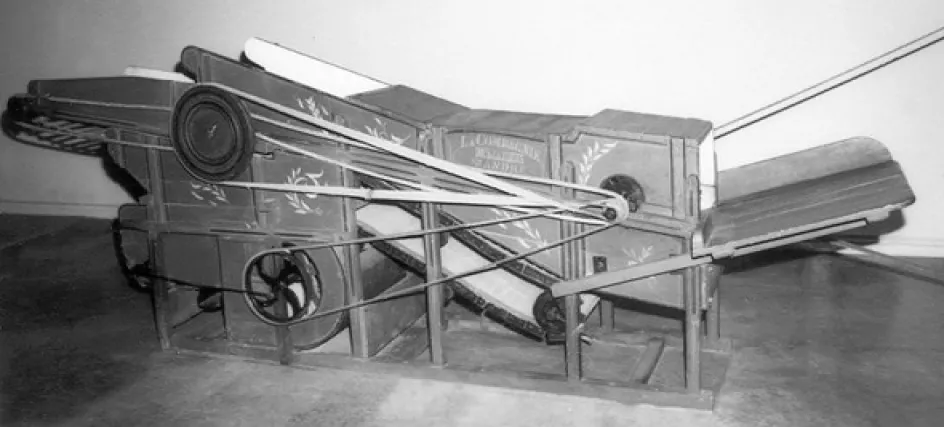
Current Location:
Collection Storage Facility
Provenance:
Transfer from the National Museum of Man in 1968
History:
La Cie Desjardins was established in 1865 in Saint-André-de-Kamouraska, Quebec. Desjardins built threshers such as “Le Vanneur,” and other agricultural equipment. In 1911, the company expanded production into gasoline engines.
Technical History:
Threshing machines separate grain from the harvested plant, which is reduced to straw and chaff. The first threshing machines were stationary: powered by hand or treadmill, they increased the amount of grain a farmer could separate in a day. Wheeled threshing machines began to replace stationary threshers in the 1860s and further mechanized grain harvesting. Threshers were initially built of wood and powered by horse-powered windlasses; they were later built of steel and powered by steam traction engines and gas tractors. Threshers were in turn replaced through the twentieth century by combine harvesters, which merged harvesting and threshing operations in one machine.
The Desjardins thresher is noteworthy because it is an early twentieth century stationary thresher that features technologies — the endless apron and fanning mill — that were first introduced in the 1860s and 1870s. These technologies automated grain cleaning and straw handling. Desjardins continued to manufacture such threshers in the twentieth century to serve local markets and smaller farms, which could not afford or take full advantage of the larger wheeled threshers that were also then on the market.
- View all the collection highlights at the Canada Agriculture and Food Museum
- View other collection highlights related to Agriculture
